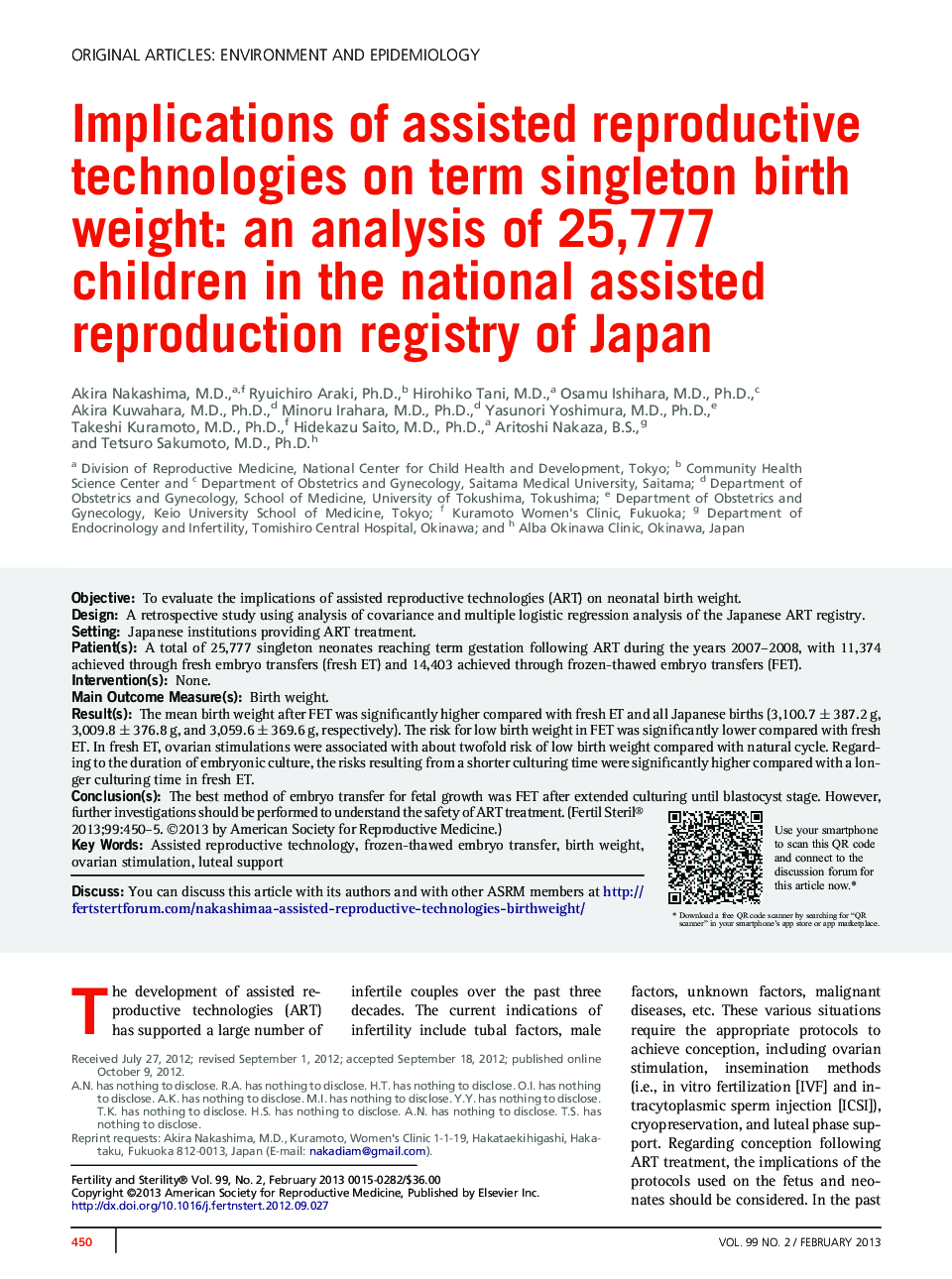| Article ID | Journal | Published Year | Pages | File Type |
|---|---|---|---|---|
| 3939487 | Fertility and Sterility | 2013 | 6 Pages |
ObjectiveTo evaluate the implications of assisted reproductive technologies (ART) on neonatal birth weight.DesignA retrospective study using analysis of covariance and multiple logistic regression analysis of the Japanese ART registry.SettingJapanese institutions providing ART treatment.Patient(s)A total of 25,777 singleton neonates reaching term gestation following ART during the years 2007–2008, with 11,374 achieved through fresh embryo transfers (fresh ET) and 14,403 achieved through frozen-thawed embryo transfers (FET).Intervention(s)None.Main Outcome Measure(s)Birth weight.Result(s)The mean birth weight after FET was significantly higher compared with fresh ET and all Japanese births (3,100.7 ± 387.2 g, 3,009.8 ± 376.8 g, and 3,059.6 ± 369.6 g, respectively). The risk for low birth weight in FET was significantly lower compared with fresh ET. In fresh ET, ovarian stimulations were associated with about twofold risk of low birth weight compared with natural cycle. Regarding to the duration of embryonic culture, the risks resulting from a shorter culturing time were significantly higher compared with a longer culturing time in fresh ET.Conclusion(s)The best method of embryo transfer for fetal growth was FET after extended culturing until blastocyst stage. However, further investigations should be performed to understand the safety of ART treatment.
